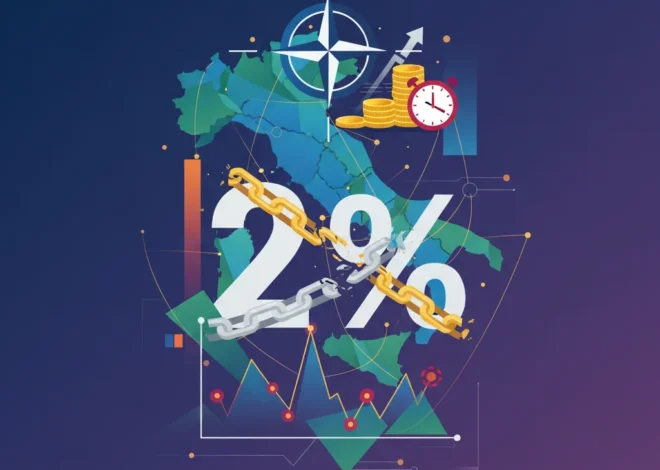
Avoiding a Century-Old Mistake: Why Grants, Not Loans, Are the Key to Rebuilding Ukraine
The physical devastation in Ukraine is a daily headline, but a less visible, yet equally perilous, threat looms over its future: the specter of a crippling national debt. As the global community rallies to support Ukraine’s eventual reconstruction, a critical debate is taking shape, one that will define the nation’s trajectory for the next century. The central question is not just *how much* aid will be provided, but in what *form*. A recent letter to the Financial Times by Charles Mercey poignantly frames this choice, drawing a stark historical parallel: will we follow the punitive, debt-laden path of post-WWI Germany, or the visionary, grant-based model of the post-WWII Marshall Plan? The answer to this question carries profound implications for the global economy, international security, and the world of finance and investing.
This is not merely an academic exercise in economics. For business leaders, investors, and finance professionals, the structure of Ukraine’s reconstruction package will be the single most important variable in determining its viability as a future market. A nation saddled with insurmountable debt is a nation prone to instability, currency devaluation, and default—a black hole for investment. Conversely, a nation rebuilt on a solid financial foundation becomes a beacon of opportunity, growth, and stability. The choice we make now will dictate which of these futures comes to pass.
The Staggering Scale of the Challenge
To grasp the gravity of the situation, we must first understand the numbers. The Kyiv School of Economics (KSE) estimated in early 2024 that the total cost of reconstruction and recovery for Ukraine has reached nearly $486 billion (source). This figure, a conservative estimate that grows with each passing day, is more than double the country’s pre-war GDP. To finance this through traditional loans would be to sentence Ukraine to a generation-long debt crisis before the first new brick is even laid.
Even before the full-scale invasion, Ukraine’s public debt was a significant concern. Today, its debt-to-GDP ratio has soared, placing immense pressure on its national finances. Piling on hundreds of billions in reconstruction loans would push it into a classic sovereign debt trap, where the country must borrow more money just to service the interest on its existing debts. This creates a vicious cycle of austerity, economic stagnation, and political fragility—the very conditions that undermine long-term growth and deter the private investment essential for a genuine recovery.
Liquid Assets: What Lakeside Living Teaches Us About Navigating Financial Markets
A Crucial Lesson from 20th Century Economics
History offers a powerful and clear lesson on the divergent outcomes of post-war financial policy. The contrast between the Treaty of Versailles after World War I and the Marshall Plan after World War II provides a near-perfect case study in what to do—and what to avoid.
The Failure of Punitive Debt: The Treaty of Versailles
Following WWI, the Allied powers imposed massive reparations on Germany, treating the debt as a punitive measure. The goal was to make Germany pay for the war, but the economic consequence was catastrophic. The Weimar Republic was saddled with a debt it could never hope to repay, leading to one of the most infamous cases of hyperinflation in history. The German economy collapsed, savings were wiped out, and the resulting social and political instability created fertile ground for the rise of extremism. The punitive debt didn’t just cripple Germany; it destabilized the entire European economy and contributed directly to the conditions that led to World War II.
The Triumph of Strategic Grants: The Marshall Plan
After World War II, the United States, remembering the failures of the past, took a radically different approach. The European Recovery Program, or Marshall Plan, provided approximately $13 billion (over $150 billion in today’s dollars (source)) to help rebuild Western European economies. Crucially, the vast majority of this aid was in the form of grants, not loans. The U.S. understood that a Europe mired in debt would be vulnerable to Soviet influence and would be a poor trading partner. By investing in Europe’s recovery, the U.S. was creating stable, democratic allies and prosperous new markets for its own goods. The result was the “Wirtschaftswunder” (economic miracle) in West Germany and decades of unprecedented growth across the continent. It was one of the most successful foreign policy and economic initiatives in history.
The comparison between these two historical precedents is stark and offers a clear blueprint for Ukraine’s future. The following table breaks down the core differences in approach and outcome:
| Feature | Treaty of Versailles (Post-WWI) | The Marshall Plan (Post-WWII) |
|---|---|---|
| Primary Mechanism | Punitive Reparations (Loans/Debt) | Strategic Aid (Primarily Grants) |
| Economic Goal | Extract payment for war damages | Rebuild economies, create stable markets |
| Short-Term Outcome | Hyperinflation, economic collapse, political instability | Rapid industrial and economic recovery |
| Long-Term Geopolitical Impact | Fostered resentment, contributed to conditions for WWII | Strengthened alliances, contained communism, created prosperous trading partners |
| Return on Investment | Negative; led to greater global instability and cost | Massively positive; secured U.S. economic and geopolitical dominance for decades |
The Modern Case for Grants: A Strategic Investment in the Global Economy
Applying the lessons of the Marshall Plan to 21st-century Ukraine reveals that a grant-based reconstruction is not just a moral imperative, but a shrewd strategic move for the global economy.
From an investor’s perspective, a grant-funded foundation for reconstruction is the ultimate confidence-building measure. It signals a long-term commitment from the international community and removes the primary risk of sovereign default. This stability is the bedrock upon which private investment can build. A Ukraine free from the crushing weight of reconstruction debt will be able to maintain a stable currency, offer predictable tax regimes, and enforce the rule of law—all prerequisites for attracting the foreign direct investment needed to truly modernize its economy. This will unlock immense opportunities in sectors like agriculture, energy, and technology, directly benefiting the global stock market and creating new avenues for growth.
The Investor's Crossword: Decoding the Puzzles of the Modern Economy
The geopolitical calculus is just as compelling. A stable, prosperous, and democratic Ukraine integrated into the European economy serves as a powerful bulwark against regional aggression and instability. A nation struggling under a mountain of debt, however, becomes a source of perpetual crisis, vulnerable to political interference and a drain on international resources for decades to come. The initial cost of grants is dwarfed by the long-term cost of managing a failed state on Europe’s border.
The Role of Financial Technology in a Transparent Reconstruction
One of the key advantages we have today that didn’t exist during the Marshall Plan is the power of modern financial technology (fintech). Concerns about corruption and transparency in aid distribution are valid, but they are not insurmountable. This is where innovation in finance can play a transformative role.
Leveraging blockchain technology, for instance, can create immutable, transparent ledgers for tracking aid disbursements. Smart contracts could automate payments to contractors upon the verified completion of reconstruction milestones, drastically reducing the potential for graft. This fusion of international aid and cutting-edge financial technology could create a new model for transparent and efficient post-conflict reconstruction. International banking institutions can spearhead these initiatives, working with fintech startups to build the digital infrastructure for a trustworthy aid pipeline. This not only ensures that funds are used effectively but also strengthens investor confidence by demonstrating a commitment to good governance. The world of trading and economics is increasingly digital, and Ukraine’s reconstruction should be as well.
The Deceleration Doctrine: Why Slowing Down is the New Strategy for Financial Success
The Path Forward: A 21st Century Marshall Plan
The choice is clear. Forcing Ukraine to finance its reconstruction with loans would be a repetition of one of the greatest economic blunders of the 20th century. It would mortgage the nation’s future, sow the seeds of long-term instability, and ultimately prove far more costly to the global community.
The path forward is to build a coalition of nations and institutions committed to a 21st-century Marshall Plan for Ukraine, one founded on the principle of grants. This is a strategic investment in a future where Ukraine is not a dependent but a partner—a vibrant, innovative, and resilient economy that contributes to global prosperity and security. For policymakers, investors, and business leaders, the message is unequivocal: advocate for a financial blueprint that builds up, not burdens. By choosing grants over loans, we are not just rebuilding a nation; we are investing in a more stable and prosperous world for all.


